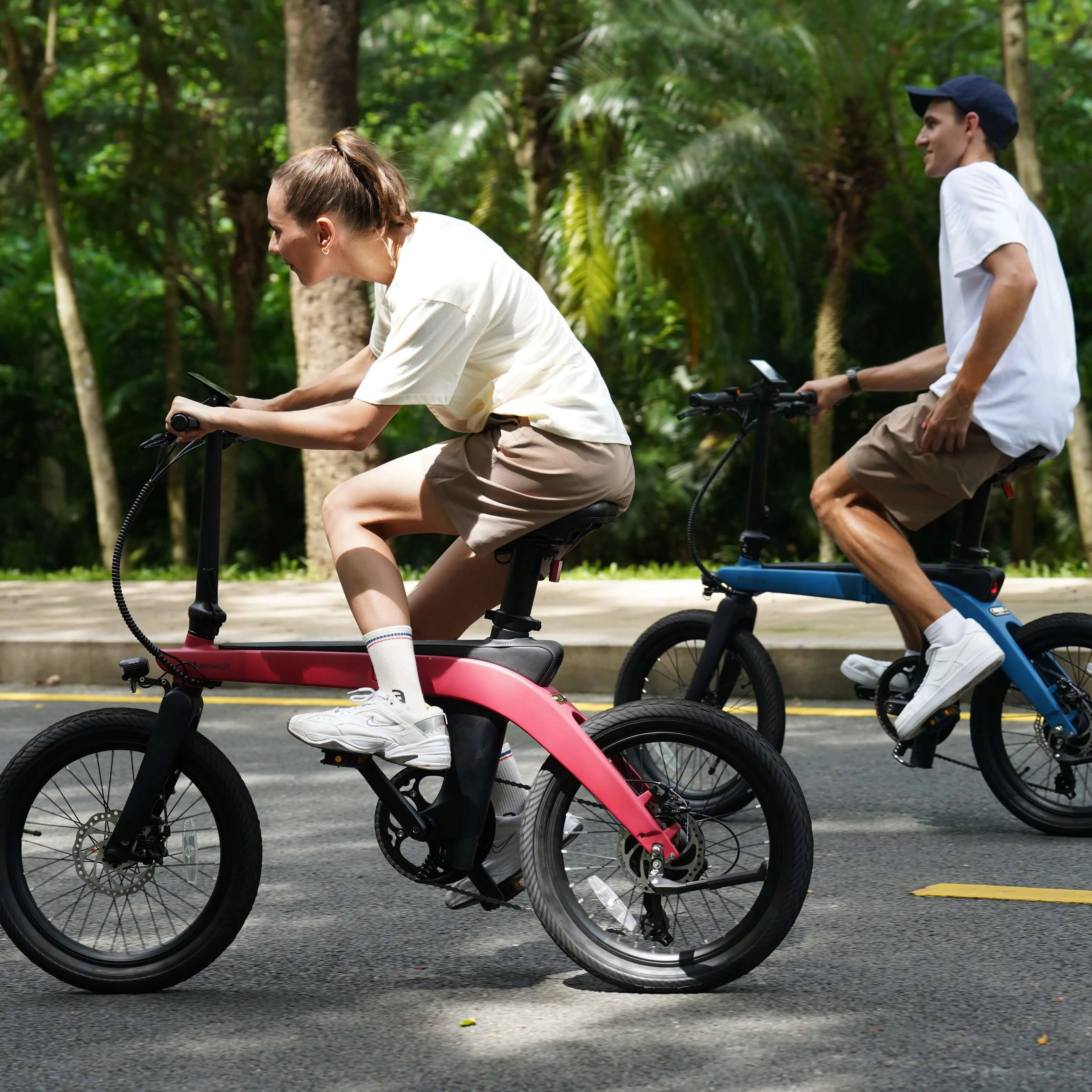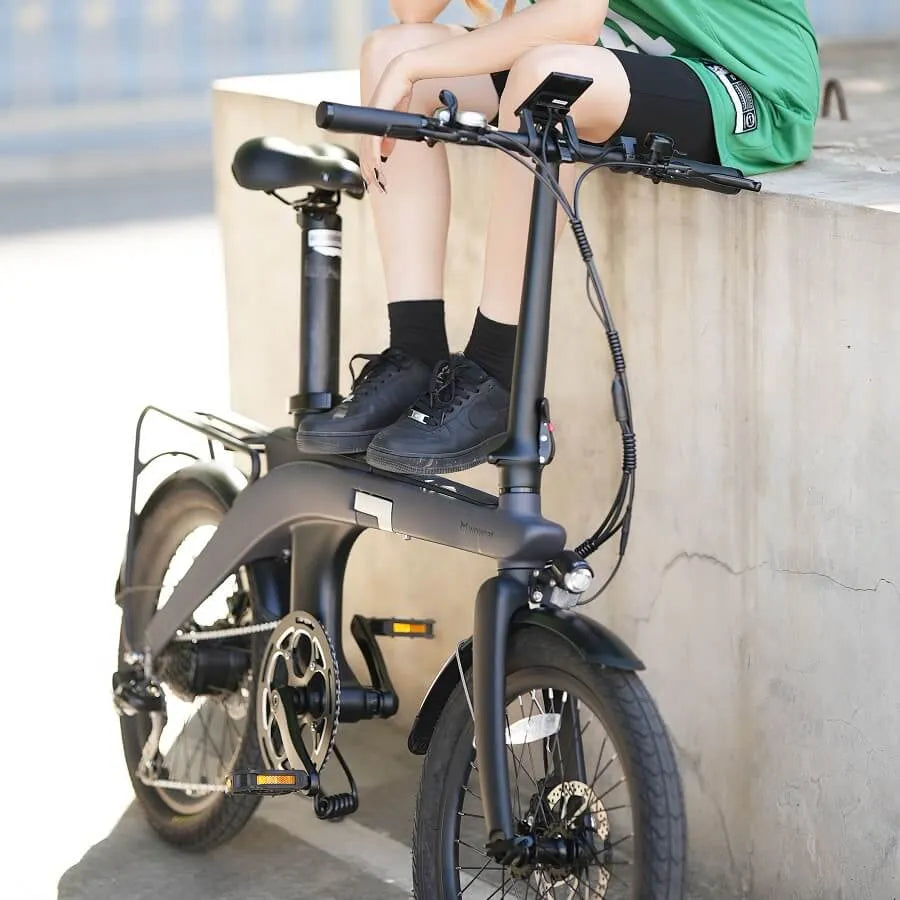In the ever-evolving landscape of electric bikes, the choice between a torque sensor and a cadence sensor has become a pivotal decision for riders seeking the ultimate cycling experience. These sensors, integral components of e-bike technology, play a crucial role in determining how power is delivered to the pedals. While both sensors contribute to the seamless integration of electric assistance, they operate on distinct principles. The torque sensor responds to the force applied to the pedals, measuring the actual pressure exerted by the rider, while the cadence sensor tracks the speed and rotation of the pedal strokes. As we delve into the realms of these two sensor types, this article aims to unravel the nuances, benefits, and considerations that come with the Torque Sensor versus Cadence Sensor dilemma, guiding riders towards a more informed choice for their electrified cycling adventures.

What Is a Torque Sensor?
A torque sensor is a fundamental component in the realm of electric bikes, designed to measure the force or pressure applied to the pedals during cycling. It operates on the principle of detecting the actual torque, or rotational force, generated by the rider's pedaling effort. Placed typically in the bike's bottom bracket or within the rear dropout, the torque sensor accurately gauges how much force a rider is exerting on the pedals in real-time. This information is then relayed to the electric motor, enabling it to deliver a proportional amount of assistance. The key advantage of a torque sensor lies in its ability to provide a more natural and responsive riding experience, adjusting the electric assistance seamlessly based on the rider's exerted force. This results in a dynamic and intuitive integration of human and motor power, offering a smoother and more efficient electric biking encounter.
Pros of A Torque Sensor
The implementation of a torque sensor in electric bikes brings forth several notable advantages:
Natural Riding Feel:
Torque sensors provide a more natural and intuitive riding experience by responding directly to the rider's effort on the pedals. The assistance from the electric motor is seamlessly synchronized with the amount of force applied, creating a smooth and authentic feel.
Dynamic Power Adjustment:
Torque sensors offer dynamic power adjustments in real-time. As the rider encounters varying terrains or adjusts their pedaling intensity, the torque sensor ensures that the electric assistance is proportionally matched, providing optimal support for different cycling conditions.
Energy Efficiency:
By precisely measuring the rider's input, torque sensors enhance energy efficiency. The electric motor delivers power only when needed, reducing unnecessary energy consumption and extending the overall battery life of the electric bike.
Responsive Performance:
Riders experience a more responsive performance with torque sensors. The system reacts quickly to changes in pedaling force, ensuring instant and accurate adjustments to the electric assistance level. This responsiveness contributes to enhanced control and maneuverability.
Customizable Riding Experience:
Many electric bike systems with torque sensors offer customizable settings, allowing riders to fine-tune the level of assistance based on their preferences. This adaptability caters to a wide range of cycling styles and individual preferences.
Improved Hill Climbing:
Torque sensors excel in hill-climbing scenarios. The system detects increased pedal pressure when tackling inclines and responds by delivering more power, making uphill rides more manageable and enjoyable for the rider.
In summary, the use of torque sensors in electric bikes elevates the overall riding experience by providing a responsive, energy-efficient, and customizable system that seamlessly integrates human and motor power.
Cons of the Torque Sensor
While torque sensors bring several advantages to electric bikes, it's important to consider potential drawbacks as well:
Cost:
Electric bikes equipped with torque sensors tend to be more expensive than those with alternative sensor systems. The technology involved in accurately measuring pedal force and providing real-time adjustments can contribute to higher manufacturing costs.
Complexity:
Torque sensor systems are more intricate compared to simpler sensor alternatives. The complexity of these systems may result in higher maintenance costs and could be challenging for some riders to troubleshoot or repair without professional assistance.
Weight:
The additional components required for a torque sensor system, such as the sensor itself and associated wiring, may contribute to a slightly heavier overall bike weight. For riders who prioritize a lightweight electric bike, this could be a consideration.
Power Consumption During Standstill:
Torque sensors may continue to consume a small amount of power even when the bike is stationary, as they remain active to detect any changes in pedal pressure. While this power consumption is minimal, it can contribute to overall energy use.
Learning Curve:
Some riders may find that adapting to the torque sensor system requires a slight learning curve. Understanding how the system responds to different pedaling pressures and adjusting riding habits accordingly may take time for those new to electric bikes.
Compatibility with Non-Pedal-Assist Modes:
Torque sensors are primarily designed for pedal-assist electric bikes. They may not be as suitable for electric bikes with a throttle-only mode, as the nature of a torque sensor is more attuned to responding to human pedal input.
While torque sensors offer a superior riding experience for many, these potential drawbacks should be considered in the context of individual preferences, budget constraints, and the intended use of the electric bike.
What is a Cadence Sensor?
A cadence sensor is a crucial component in the realm of electric bikes, designed to measure the speed and rotation of a rider's pedal strokes. Unlike torque sensors, which focus on the actual force applied to the pedals, cadence sensors monitor the frequency of pedal rotations per minute (RPM). Typically mounted on the bike's crankset, pedal, or chainstay, the cadence sensor provides valuable data on how fast a rider is pedaling.

This information is vital for electric bike systems as it helps determine the level of assistance the electric motor should provide. By gauging pedal speed, the cadence sensor ensures that the electric assistance is proportional to the rider's pedaling cadence. This approach offers a more straightforward method of adjusting assistance levels, making it well-suited for certain riding scenarios.
Pros of a Cadence Sensor
Cadence sensors offer several advantages in the context of electric bikes, making them a popular choice for certain riders and scenarios:
Simplicity and Affordability:
Cadence sensors are generally simpler and more cost-effective compared to torque sensors. This simplicity often translates to a lower overall cost for electric bikes equipped with cadence sensor systems.
Consistent Assistance:
Cadence sensors provide a consistent level of assistance based on pedal speed. This can be advantageous for riders who prefer a steady and predictable electric assistance, especially in situations where a constant speed is desired.
Ease of Use:
Riders find cadence sensors easy to use, as they respond primarily to pedal speed rather than the force applied to the pedals. This simplicity makes them suitable for individuals who may be new to electric bikes or prefer a straightforward riding experience.
Suitability for Certain Riding Styles:
Cadence sensors work well for riders who maintain a more constant cadence, such as those who enjoy leisurely rides or commute at a steady pace. The system offers support without requiring the rider to constantly adjust their pedaling intensity.
Battery Efficiency:
Cadence sensors can contribute to efficient battery usage. Since the system primarily responds to pedal speed, it may consume less power compared to torque sensors in certain scenarios, leading to extended battery life.
Compatibility with Throttle-Only Modes:
Cadence sensors are compatible with electric bikes that have a throttle-only mode. This makes them a versatile choice for riders who prefer the option of manual control over the level of assistance.
In summary, cadence sensors provide a straightforward and cost-effective solution for electric bikes, offering consistent assistance based on pedal speed. Their simplicity and compatibility with various riding styles make them an appealing choice for many riders seeking a reliable and user-friendly pedal-assist system.
Cons of a Cadence Sensor
While cadence sensors have their advantages, there are also some drawbacks to consider:
Less Intuitive Power Delivery:
Cadence sensors may provide less intuitive power delivery compared to torque sensors. Since they primarily respond to pedal speed rather than the force applied, the level of assistance may not always align perfectly with the rider's desired effort.
Limited Responsiveness to Changes in Terrain:
Cadence sensors may not respond as quickly to changes in terrain or the rider's effort level. In situations where rapid adjustments to power are needed, such as climbing a steep hill, the system might not provide the immediate response that torque sensors offer.
Difficulty on Varied Terrain:
On variable terrains, where a rider may shift between pedaling intensities frequently, cadence sensors might not adapt as seamlessly as torque sensors. This can result in a less dynamic and responsive riding experience in challenging conditions.
Potential for Lag:
Cadence sensors might introduce a slight lag in power delivery. The delay between changes in the rider's pedaling speed and the corresponding adjustment in electric assistance can be noticeable in certain situations.
Less Natural Feel:
Some riders find that cadence sensors provide a less natural feel compared to torque sensors. The fixed relationship between pedal speed and assistance level may not capture the nuanced variations in pedaling force that contribute to a more authentic riding experience.
May Not Suit All Riding Styles:
While suitable for riders who maintain a steady cadence, cadence sensors may be less ideal for those who prefer to vary their pedaling intensity based on the terrain or personal preference. This limitation can impact the overall riding experience for certain cyclists.
In conclusion, while cadence sensors offer simplicity and cost-effectiveness, their limitations in terms of responsiveness and adaptability to varied riding conditions should be carefully considered, especially by riders with specific preferences for a more dynamic and natural feel in their electric biking experience.
Difference Between Torque and Cadence Sensor
Torque sensors and cadence sensors are both critical components in electric bike systems, yet they operate on distinct principles and contribute to the overall riding experience in different ways. Here are the key differences between torque sensors and cadence sensors:
Measurement Principle:
Torque Sensor: Measures the actual force or pressure applied to the pedals. It provides real-time feedback on the rider's pedal pressure, enabling the electric bike system to adjust the level of assistance accordingly.
Cadence Sensor: Measures the speed and rotation of the pedal strokes, typically in revolutions per minute (RPM). It indicates how fast the rider is pedaling, and the electric bike system responds by delivering assistance based on pedal speed.
Response to Rider Input:
Torque Sensor: Responds directly to the force applied by the rider on the pedals. The level of assistance is proportional to the pressure exerted, providing a more dynamic and responsive riding experience.
Cadence Sensor: Responds to the speed of the rider's pedaling. It offers a more consistent level of assistance based on pedal speed, which may feel less responsive to changes in the rider's effort.
Natural Riding Feel:
Torque Sensor: Provides a more natural and intuitive riding experience by closely mirroring the way a rider naturally exerts force on the pedals. The assistance is finely tuned to the rider's effort, resulting in a smoother integration of human and motor power.
Cadence Sensor: Offers a consistent level of assistance based on pedal speed. While this can be suitable for steady-paced riding, some riders may find it less intuitive and responsive, especially in varied terrain.
Adaptability to Terrain:
Torque Sensor: Adapts seamlessly to changes in terrain, providing instant adjustments to the assistance level based on the rider's pedal pressure. Well-suited for varied and challenging conditions.
Cadence Sensor: May be less responsive to sudden changes in terrain or the rider's effort. The assistance level is primarily determined by pedal speed, which may not account for nuanced variations in pedaling force.
Cost and Complexity:
Torque Sensor: Tends to be more expensive and complex due to the precision required to measure pedal force accurately. The technology involved contributes to a higher overall cost for electric bikes equipped with torque sensors.
Cadence Sensor: Generally simpler and more cost-effective. The straightforward measurement of pedal speed contributes to a more affordable overall system.
Ultimately, the choice between a torque sensor and a cadence sensor depends on the rider's preferences, riding style, and the desired level of responsiveness in their electric biking experience. Some riders prioritize the natural feel and dynamic response of a torque sensor, while others may appreciate the simplicity and consistent assistance provided by a cadence sensor.
Making the Right Choice for Your E-Bike Needs
Selecting the appropriate sensor type for your electric bike is a crucial decision that significantly influences your overall riding experience. Understanding your preferences, riding style, and the terrain you frequently encounter will guide you in making the right choice between a torque sensor and a cadence sensor. Here are some key considerations to help you make an informed decision:
Riding Style:
Torque Sensor: Ideal for riders who seek a more natural and responsive feel, especially those who enjoy dynamic and varied terrain. Torque sensors excel in adapting to changes in pedaling force, providing a seamless integration of human and motor power.
Cadence Sensor: Suited for riders who prefer a consistent and predictable level of assistance. If you maintain a steady cadence and appreciate a straightforward riding experience, a cadence sensor may be the better fit.
Terrain and Conditions:
Torque Sensor: Well-suited for diverse terrains, including hills and challenging landscapes. The instant response to changes in pedal pressure makes torque sensors advantageous in situations where quick adjustments to the assistance level are crucial.
Cadence Sensor: Suitable for riders who mainly encounter flat or consistent terrain. While cadence sensors can adapt to changes, they may not provide the same level of responsiveness as torque sensors in more demanding conditions.
Budget:
Torque Sensor: Generally comes with a higher price tag due to the precision and complexity involved in measuring pedal force accurately. Consider your budget and weigh the cost against the enhanced riding experience provided by a torque sensor.
Cadence Sensor: Offers a more cost-effective solution. If budget constraints are a primary concern, a cadence sensor system may be a more affordable option without compromising basic pedal-assist functionality.
Preference for Natural Feel:
Torque Sensor: Delivers a more natural and intuitive riding experience by closely mirroring the way you naturally apply force to the pedals. If you prioritize a seamless integration of your effort with electric assistance, a torque sensor may be preferable.
Cadence Sensor: Provides a consistent level of assistance based on pedal speed. If you appreciate simplicity and ease of use, a cadence sensor can offer a user-friendly riding experience.
Customization Options:
Torque Sensor: Many e-bike systems with torque sensors offer customizable settings, allowing you to fine-tune the level of assistance based on your preferences. This adaptability caters to a wide range of riding styles.
Cadence Sensor: While generally less customizable, some systems may still offer adjustable settings. Consider whether the level of customization aligns with your preferences and needs.
Ultimately, the right choice between a torque sensor and a cadence sensor depends on your individual priorities and the type of electric biking experience you desire. Test rides, reviews, and consultations with experts can provide valuable insights to help you make an informed decision tailored to your specific needs and preferences.











